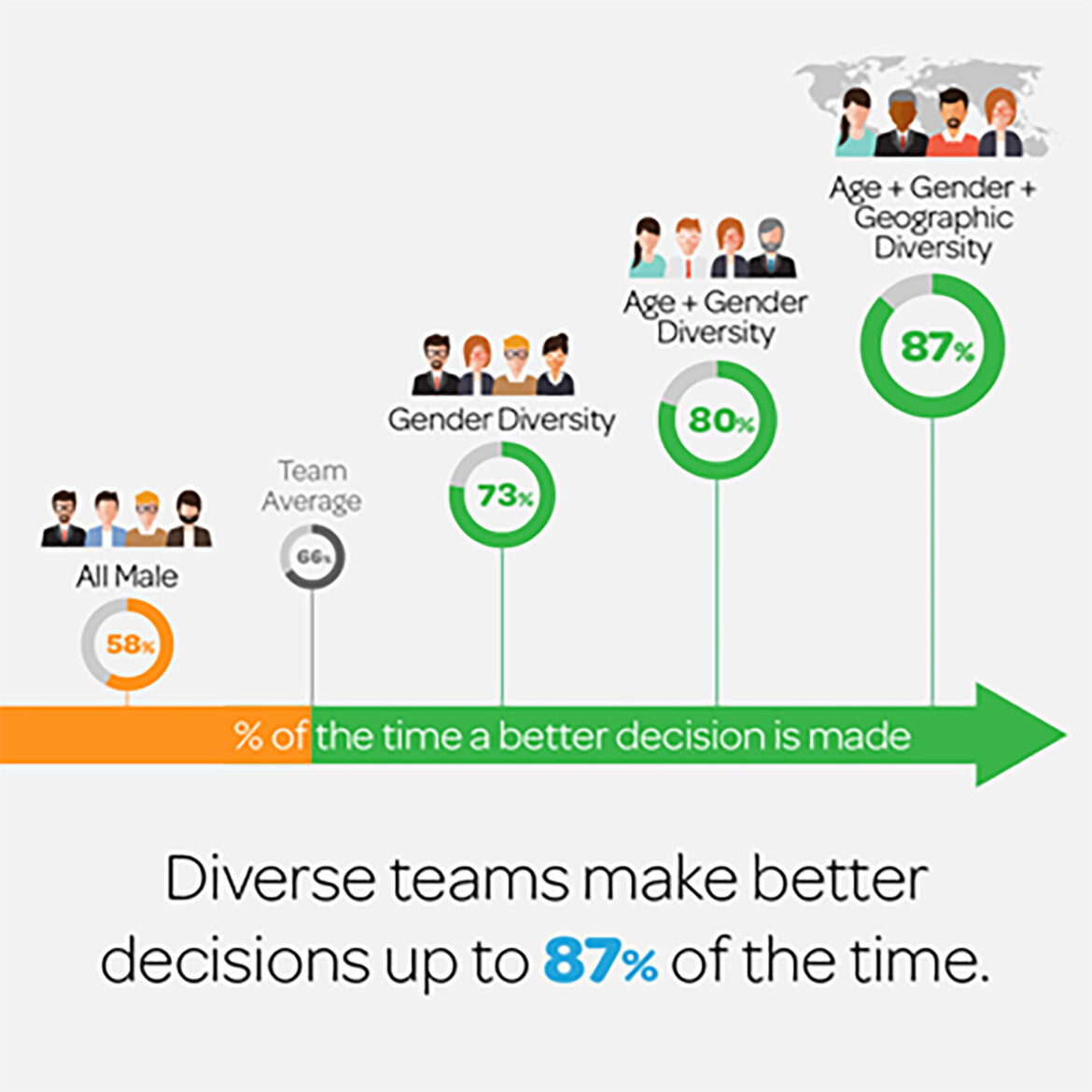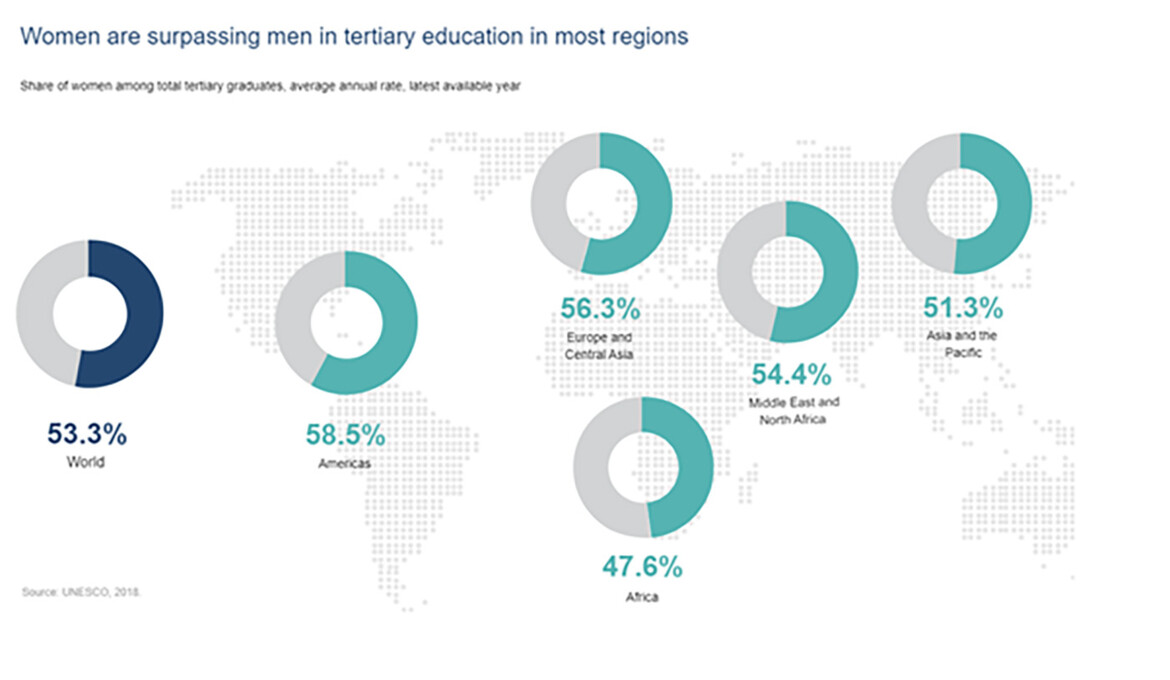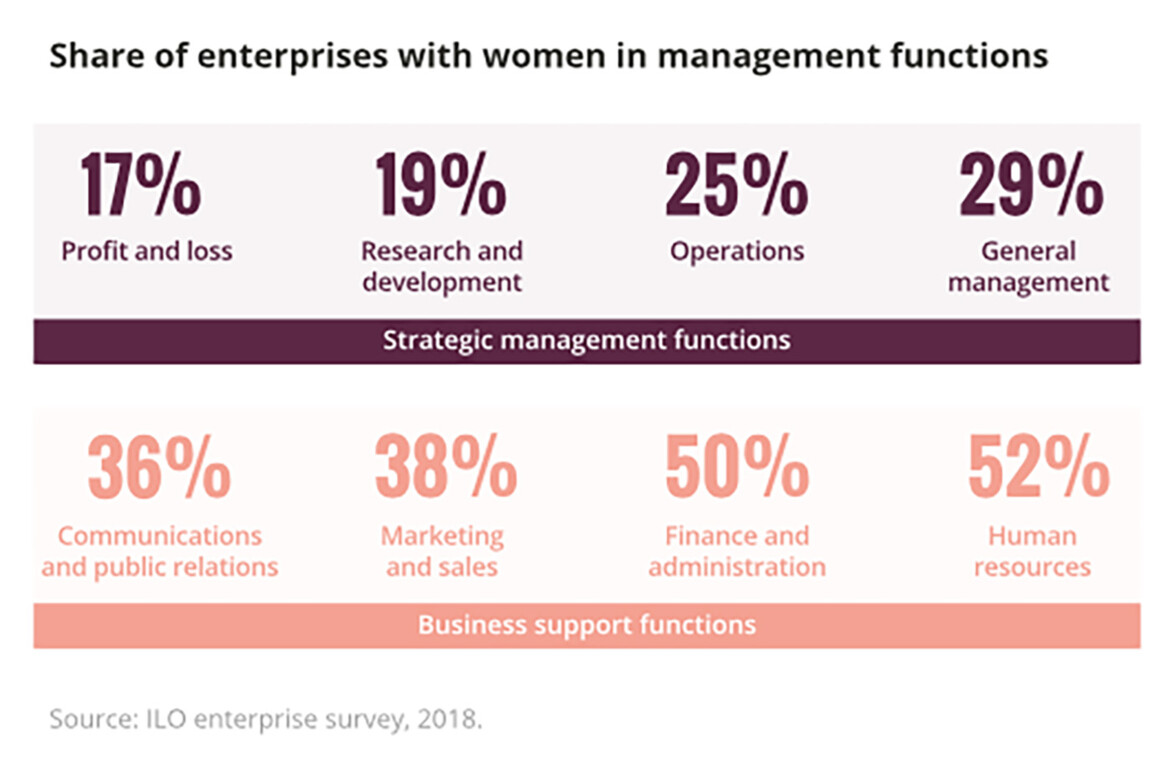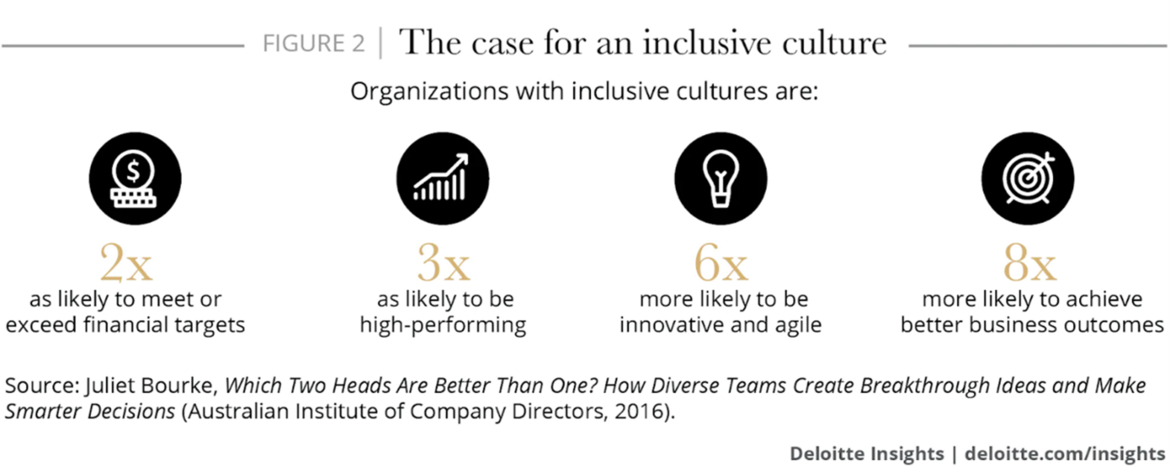Why a Diverse Workforce is the Key to Business Success
Embracing a diverse workforce is the key to unlocking innovation, adaptability, and success in today’s fast-paced digital landscape, as showcased by Thomas Amberg from Ynvolve.

©Lacheev | istockphoto.com
No matter which industry you’re in or what products and services you offer, it’s clear that almost every organization today is operating like a tech company. Digital acceleration has transformed the landscape, pushing businesses that once flew under the radar as “non-tech” to embrace technology at every turn just to stay competitive. This shift creates an urgent demand for resources—both in terms of infrastructure to keep up with rapid changes and skilled employees who can drive this transformation effectively.
That’s where a diverse and gender-balanced workforce comes into play, giving companies an incredible edge. At Ynvolve, we don’t just talk the talk when it comes to diversity and inclusion—we live it every day! With 50% of our leadership positions occupied by women and a vibrant team representing over 25 nationalities, we’ve seen firsthand how fostering a multicultural and gender-balanced environment not only enriches our workplace but also boosts our business performance.
And the benefits are backed by research. Studies like the one from CEB suggest that diverse and inclusive teams see an increase in individual effort, a boost in retention, and a strong improvement in collaboration and commitment. Who wouldn’t want employees who are engaged, loyal, and ready to collaborate?
Despite these clear advantages, many organizations still overlook this crucial topic. With this article, we aim to shine a light on the importance of diversity in driving digital acceleration and inspire some positive change in your own business environment.
The benefits of multicultural teams
Perhaps the most obvious point: a multicultural workforce brings a wealth of perspectives and experiences to the table. Studies have shown that diverse teams are more innovative and effective at problem-solving. According to McKinsey (How diversity, equity, and inclusion (DE&I) matter | McKinsey), companies with higher diversity are more likely to have financial returns above their respective national industry medians. On top of that, they found that the greater the representation, the higher the likelihood of outperformance on all indicators. For us, three main benefits come to mind when talking about multicultural teams:
1. Enhanced creativity and innovation:
Different cultural backgrounds lead to unique viewpoints and ideas. This diversity in thought encourages creativity and innovation, which is essential for us in developing cutting-edge IT solutions.
As Deloitte puts it perfectly in their report: “Diversity of thinking is powerful for three reasons. First, it helps create a stronger and broader narrative about the case for diversity, one in which everyone feels relevant and part of a shared goal. Second, it more accurately reflects people’s intersectional complexity instead of focusing on only one specific aspect of social or demographic identity. Third, a focus on cognitive diversity recognizes that demographic equality—rather than being its own end—is useful as a visible indicator of progression toward diversity of thinking. The truth is that optimal diversity of thinking cannot be achieved without a level playing field for all talent, and clearly, there is still work to be done on that front.” (Deloitte Review, issue 22)
BCG Research also concludes that companies with a higher diversity score report more revenue from innovation than other entities:

2. Broader market understanding:
A multicultural team better understands and relates to a global customer base. We are either buying or selling in over 45 countries, so this is a crucial point for us: this cultural empathy directly results in improved customer service and the ability to tailor solutions to meet diverse client needs in almost any scenario. We can communicate efficiently with a wide variety of partners—taking into account multicultural differences—integrate solutions globally, and speak the language of a majority of our partners.
Expanding into new markets, appealing to a broader audience, and adapting marketing campaigns for different cultures also become much easier, as McKinsey research shows.
3. Improved decision-making:
Diverse teams have been proven to make better decisions. Cloverpop, a decision-making platform, found that diverse teams outperformed individual decision-makers 87% of the time. This is because different perspectives reduce the risk of groupthink and enable more comprehensive evaluations of options.

Source: Cloverpop
But geographic diversity is just one part of the puzzle—as you can see from the study above, your team will only improve when you foster a higher gender diversity at every level of the company. With 52% of our employees being women, we definitely observe these benefits.
Gender balance in the workplace
In a study by the International Labour Organization, we can see that, on a global scale, approximately 50% of working-age women are part of the labor force, while the number stands at 75% for men. There are also more women in tertiary education than men in all continents besides Africa—so in theory, the workplace should be at least gender-balanced.

Even though women have been filling managerial positions faster than men since 1991, there is still a long way to go to reach equality—especially when looking at the top-management and board positions, which are still almost exclusively held by men in many countries. Even in companies with a good gender balance score, women have fewer “strategic” roles than men, typically working in business support functions such as HR, Finance, and Administration:

Yet, as with multicultural teams, studies have shown over the years the advantages of gender balance in management positions. ILO tells us that “when enterprises have an inclusive business culture and inclusive policies, the predicted probability of achieving:
- increased profitability and productivity is 63%
- enhanced ability to attract and retain talent is 60%
- greater creativity, innovation, and openness is 59%
- enhanced company reputation is 58%
- better ability to gauge consumer interest and demand is 38%.”
When boards are gender-balanced, companies are almost 20% more likely to have enhanced business outcomes.
From our experience, two points stand out, also corroborated by studies:
1. Enhanced team dynamics & diverse leadership styles:
Gender-balanced teams tend to have better communication and collaboration. A study by MIT found that teams with a more balanced gender mix communicate more effectively and share information more openly. Bringing together different communication styles and perspectives enhances understanding, cooperation, and problem-solving capabilities. For instance, women often excel in collaborative environments, focusing on inclusive discussions and ensuring that all voices are heard, leading to more comprehensive and well-rounded decision-making.
On the other hand, male leaders might focus on setting clear goals and driving performance through competition. The combination of these styles can enhance organizational flexibility and responsiveness, making the company better equipped to navigate challenges and seize opportunities. This blend of leadership styles not only improves team dynamics but also drives better business outcomes by leveraging the strengths of both male and female leaders. Of course, these are just statistical generalities and don’t mean that all women or all men will have those tendencies, but a blend is nevertheless always preferable.
2. Increased profitability:
Companies with a higher proportion of female executives often see improved financial performance. A report from Credit Suisse revealed that companies with women making up at least 15% of senior management are 50% more profitable than those with fewer female executives. And that doesn’t stop at the executive level. The same report showed that organizations with at least one female board member yielded higher returns on equity and higher net income growth than those that did not have any women on the board.
Inclusivity: The cornerstone of success
Inclusivity goes beyond just having a diverse team; it involves creating an environment where all employees feel valued and empowered to contribute their best work. An inclusive workplace can significantly enhance employee satisfaction and retention.
1. Employee engagement and retention:
Deloitte’s research indicates that inclusive companies are 1.7 times more likely to be innovation leaders in their market and 1.8 times more likely to be change-ready. Employees who feel valued are more likely to stay with the company, reducing the costs associated with high turnover.

2. Attracting top talent:
Companies that prioritize inclusivity attract a wider pool of talent. Glassdoor’s Diversity & Inclusion Workplace Survey reports that 76% of job seekers consider workplace diversity an important factor when considering employment opportunities, up almost 10% from the last survey that was a year before.
Conclusion
Embracing a multicultural and gender-balanced workforce isn’t just the right thing to do—it’s a smart business move that can set your company apart. By bringing together diverse perspectives, you unlock a treasure trove of creativity, better decision-making, and, ultimately, greater profitability. By committing to diversity and inclusion, you’re not only enhancing your bottom line but also cultivating a vibrant workplace where talented individuals are excited to join, give their best, and stick around for the long haul.
In this period of digital acceleration, companies that prioritize diversity and inclusion are better equipped to adapt to rapid changes and meet evolving customer expectations. Embracing diversity isn’t just beneficial; it’s essential for driving innovation and achieving lasting success. Let’s make inclusivity the cornerstone of our journey toward digital transformation!
Born and raised in southern Germany, Thomas Amberg is a European at heart. He combines an international mindset with his practical and dynamic approach to life. Studying and living abroad in the Netherlands and Denmark taught him to be adaptable and culturally aware. Now responsible for the development of DACH markets, he is also a passionate handball player.
Please note: The opinions expressed in Industry Insights published by dotmagazine are the author’s or interview partner’s own and do not necessarily reflect the view of the publisher, eco – Association of the Internet Industry.





